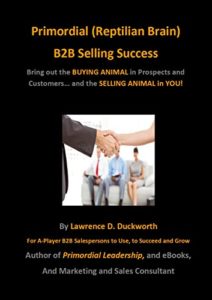As sales managers, you all know how important it is to be effective at managing your sales staff and sales pipeline. Moreover, you must be honest with yourself and your executive team because in today’s competitive marketplace and uncertain economy, it is difficult to manage sales structures, products, policies, and sales staff while keeping executive management satisfied.
At times, being reminded of 3 Steps to effective sales management can have a profound impact on your effectiveness. Concentrate on what we at RareAgent call the 3 “S’s” . . . Salesforce Structure, Sales Manager’s Responsibilities, and Sales Team Building/Training Events.
By concentrating on these three areas, you can significantly increase your effectiveness and create a high-performance sales staff.
Be honest with yourself when answering the questions below. Rate yourself on a scale of 1-10 for each key “S” area. If you get less than a 5 in any key area, consider pulling in an outside consultant who can provide fresh eyes, and the expertise and bandwidth to help address concerns and put a plan into place to rectify problems. Two companies that can help with sales process are The Bridge Group and Score More Sales, besides RareAgent.
Here are the Top 3 “S’s” to concentrate on:
1) Salesforce Structure – What type do you have? Is it base on product, geography, customers or a combination of all?
a. Sales Culture – What makes up your sales culture? Do you need help addressing: absenteeism, alienation, lack of involvement, job satisfaction, HR issues? RareAgent knows that when efficiency and productivity go down, the cost goes up and morale levels plummet.
b. Sales Assessments – What sales assessments do you use to uncover the strengths and weaknesses of your sales reps? Wonderlic and Objective Management Group offer excellent assessment testing.
c. Salespeople –What are your manpower needs? How is your staff trained on products? How do you ensure sales reps can handle tasks effectively to produce desired results? What is the number of prospective customers needed? What amount of business do you expect each sales person to generate? What tools are currently in place or are needed for sales staff to be effective and efficient?
2) Sales Manager’s Responsibilities – What is your process for hiring, training, coaching, motivating, setting sales quotas and tracking results? How do you reward performance? How do you provide leads and sales support? Do you feel organized in your sales efforts? How do you conduct your sales meetings? How do you allocate scarce resources?
a. Sales Products – What are the key features, advantages, and benefits of your products? In what way will the product be used to address the need in the market? What is your pricing, point of sale, place, and availability of product?
b. Sales Policies –What policies are in place that are impacting product, distribution, and pricing?
c. Salesforce Selling – Do you split your sales into Sales Development, Sales Maintenance, or something else?
d. Sales Tactic –Do you approach prospects using methods like Stimulus, Needs Satisfaction, Problem Situations?
e. Sales Process – How do sales reps prospect? Do they know how to approach a prospect properly? What approach do they use? Do you coach them daily, weekly, monthly through this process? How are presentations built and meetings set? What are the common sales objections, or sales resistance that your sales reps experience? Once a sale is closed, what post sales follow-up is needed?
f. Sales Prospecting – How do you generate awareness, appeal, inquiries? Who is your target customer? What personas are needed to communicate with key titles effectively? What CRM solutions do you have in place? Three that are easy to use and come to mind are, Pipeliner CRM, Salesforce, and Zoho.
g. Salesforce Objectives – What are the Qualitative and Quantitative components of your salesforce’s objectives?
h. Salesforce Strategies – What are your go to market and market access strategies (telemarketing, channel, direct, partners, agents)?
i. Sales Account Relationship Strategies – What type of rapport do you set with customers – is it daily, weekly, quarterly, and so forth?
j. Sales Account reviews including Win/Loss Reviews – Do you review sales opportunities daily with your sales reps? Do you track each team member’s win/loss ratio? Do you perform win/loss reviews after each opportunity is won or loss? What are the commonalities of why you are winning or losing each sale? How are you addressing the reasons why you are losing sales?
3) Sales Team Building/Training Events – How do you make your team building events productive, collaborative, motivating, involving and satisfying? What are some exciting, daring and fun team building ideas you can bring to the table? Do you have a documented process when training a sales rep? Are you able to provide continuing training to your sales staff?
a.Team Building Ideas – Do you take your team off site for team building? Have you ever tried an obstacle course, escape the room, inspirational tours, zip lining, high rope climbing, field games and sporting events? Have your brought in any motivational speakers?
Again, be honest with yourself when answering these questions. Moreover, don’t beat yourself up if you score less than 5. Sometimes you score low because you have not been given an adequate budget, resources or time to address the 3 “S’s” Steps to effective sales management.
Pipeliner CRM empowers effective sales management. Get your free trial of Pipeliner CRM now.













Comments